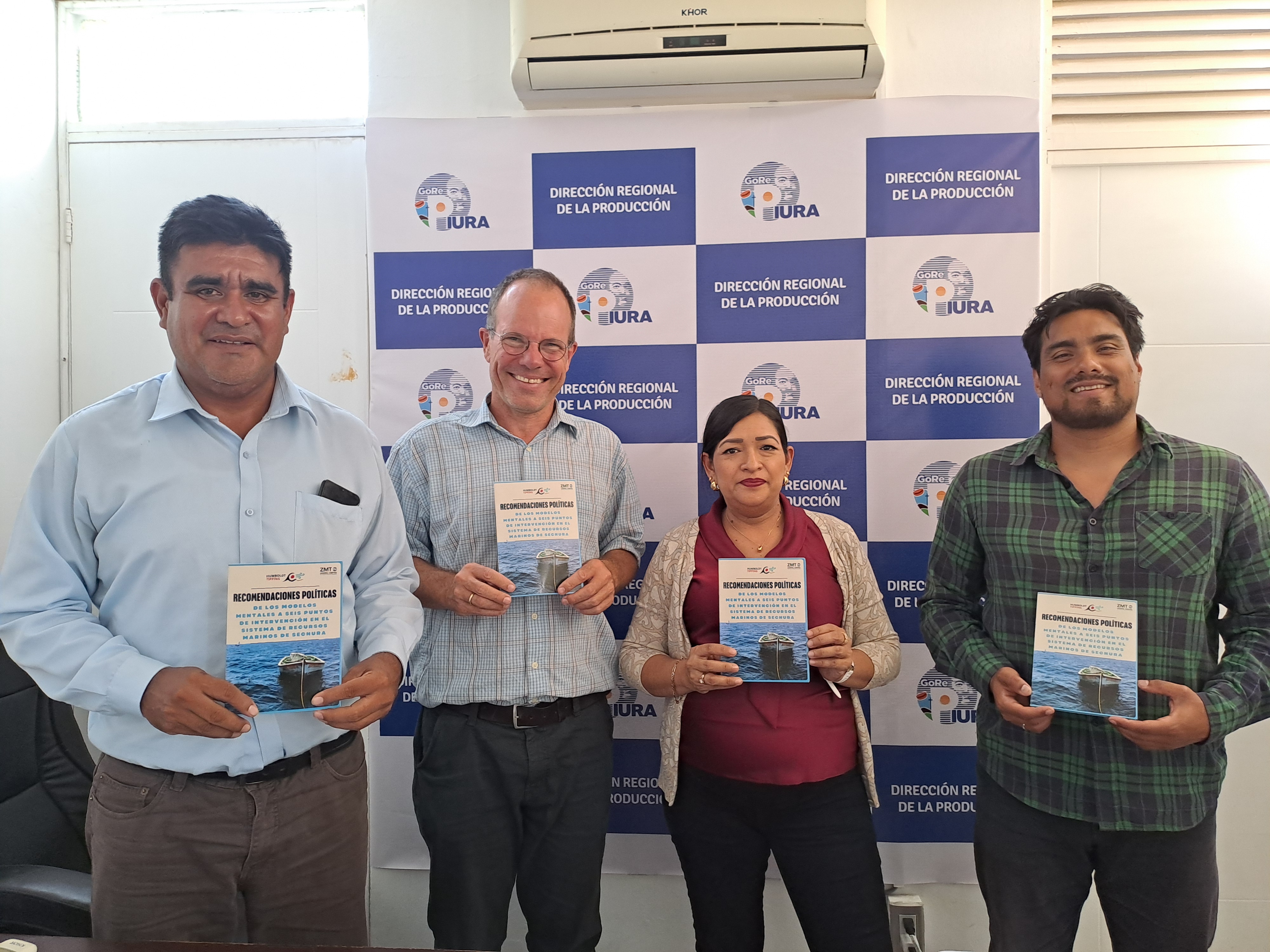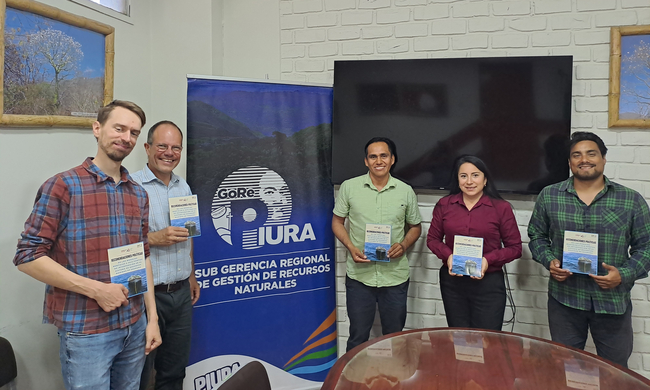14/11/2025 | As part of the subproject “Participatory Modelling of Social-Ecological Futures of the Bay of Sechura”, researchers from the Leibniz Centre for Tropical Marine Research (ZMT) have presented Spanish-language policy recommendations for the Bay of Sechura in Northwestern Peru to stakeholders on the municipal, provincial, and national levels. The work forms part of the Humboldt Tipping Project, funded by the German Federal Ministry of Research, Technology and Space (BMFTR).
Coastal communities and fisheries in the region depend on the functioning of the Humboldt Upwelling System (HUS) – one of the most productive marine ecosystems in the world. It sustains immense populations of fish and other marine species and underpins the livelihoods of thousands of people along the Peruvian coast.
Since 2019, natural and social scientists from Germany and Peru have been assessing the risk of decreases in marine ecosystem productivity as a tipping point for the interlinked ecological, economic and social systems of the Northern Humboldt Upwelling System (HUS). The extreme variability in climate-related productivity of this upwelling system impacts local livelihoods and worldwide markets.
Within the Sechura subproject, researchers aimed to better understand the complex interplay between ecological dynamics and human dynamics in the HUS. With the help of participatory modelling based on stakeholder perspectives, the team developed governance recommendations designed to strengthen the resilience of coastal communities and resource users in Peru.
“Over a period of two years, we conducted a fuzzy cognitive mapping (FCM) exercise involving 45 actors from various sectors of the Bay,” explains Professor Achim Schlüter, who coordinated the subproject at ZMT. “Together, we built models that describe the social-ecological system of the Bay of Sechura.”
“The aggregated FCM models help to identify key leverage points for effective interventions within the system, based on stakeholders’ collective understandings of the key drivers and processes. In addition to these quantitative analyses, around 100 hours of interview material and several series of stakeholder workshops contributed to the formulation of policy recommendations”, adds Ben Nagel, postdoctoral researcher at ZMT.
The recommendations were finalized during a closing workshop on 10 November in Sechura. They summarize the shared perspectives developed throughout the participatory process and are now being distributed among all major stakeholder groups in Sechura, as well as to relevant government institutions across multiple levels of governance.

Handing over the policy recommendations to representatives from the Piuria. Pictured from left are Pedro Manuel Castillo Farfan (DIREPRO, Piura), Achim Schlüter (ZMT), Carla Maria Ruiz Calle (DIREPRO, Piura) and Carlos Nuñez Beingolea, PUCP Lima.
So far, the policy brief has been handed over to local associations and government officials at the municipal and regional levels. In the next days, it will be handed over to the Ministry of Production (PRODUCE) in Lima.
The reactions have been extremely positive, indicating the relevance of the findings. The director of the regional conservation system (SRCAN), Lucy Cristina Riojas Rivera, indicated that this document will be consulted in orienting future programmes, as it analyses clearly intervention areas, which require consideration from governors.
Luis Alberto Cabrera Alvarado, President of the association of small-scale gillnet fishers in Puerto Rico, Sechura commented on the policy brief, “I thank and congratulate those who published this; it hits the nail on the head.”
Short summary of the key policy recommendations from the Policy Brief: “De Los Modelos Mentales A Seis Puntos De Intervención En El Sistems De Recuros Marinos De Sechura”
Several recommendations aim at addressing immediate marine resource challenges – such as the need for the creation of a mariculture production risk insurance mechanism in the face of climate change impacts, and a recommendation for updated scientific fisheries stock assessments incorporating traditional knowledge and joint monitoring. Others relate more to the design of policy and regulations – including the recommendation for a one stop “formalization support office” to help provide technical and legal guidance and support for navigating costly and confusing regulatory bureaucracy, as well as revising sanctioning rules, which harshly criminalize subsistence practices, around more graduated penalties proportional to magnitude of infraction.
Key policy recommendations are given in relation to six intervention point. For climate related financial risks, a revolving fund with insurance functions for reactivations and joint initiatives on diversification of aquacultural products should be developed. For combating bay pollution and ecosystem degradation, existing legislation should be made applicable and then applied.
For new projects, putting at risk environmental achievements, like petrochemicals and the planned mega port, proper community consultations should be established. This links well to the intervention area of predation, where also laws should be revised and adapted avoiding to criminalise minor offences and to let go fundamental offences. This goes hand in hand with the need of applying, monitoring, and enforcing laws, which is currently often not done.
In the field of generalised corruption, schemes which make more active use of the community of fishers in joint monitoring efforts and an independent entity, which controls state agencies responsible for handing out licences and quota would be highly recommended. The need for formalisation is strongly perceived and hand in hand with other intervention area, here the revision of regulations, to reduce interpretation potential when applying them would be needed. A solid regulation and its enforcement for scallop aquaculture related diving is seen as a need to reduce the social costs of this activity (various young men die every year).
The last and sixth intervention point relates to equity issues, as over the last two decades a high concentration of assets has happened in the Bay, despite the fact that initially the aquaculture activity was reserved to small scale artisanal producers. Small producers are asymmetrically dependent on hatcheries and processors, which have a high degree of market power. This power should be reduced. Additionally, the state should foster initiatives that engage in collaborative organisations to get interests better heard. Also, most policy recommendations suggested for the other intervention areas will have in their majority a positive effect on the equality of distribution in the bay.





